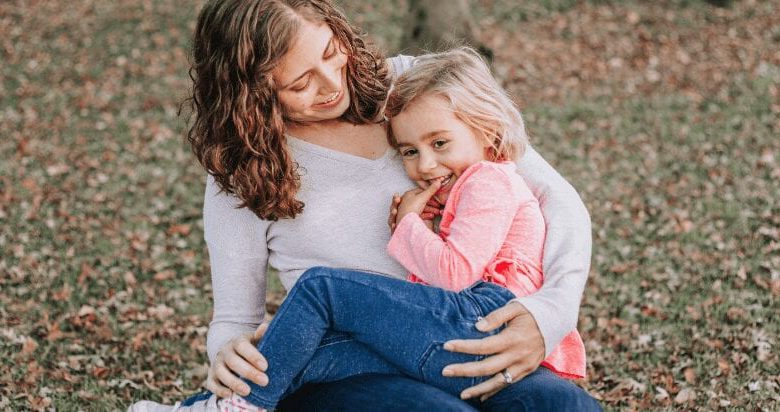Preschool Separation Anxiety During COVID-19

Preschool Separation Anxiety During COVID-19
Today’s the day. Your kiddos first day of preschool. You’ve picked out the cute new outfit, you bought that adorable backpack, and your child seems just as excited as you are about going to “big kid” school.
But something changes as soon as you wave and say goodbye. Your child’s bottom lip begins to tremble, tears run down their cheeks, and they’re holding on to your leg so tightly that they’re cutting off circulation to your foot.
What happened? A classic case of separation anxiety.
But the world has changed in big ways. There’s nothing “classic” about it. Separation anxiety in toddlers and small children is on the rise, and it’s no surprise that the changes brought on by the COVID-19 pandemic have a lot to do with it.
So if your child is having a hard time letting go of your hand, rest assured you are not alone.
What Is Separation Anxiety?
Separation anxiety in children is a totally normal part of their development. It actually helps children understand relationships and master their environment. In fact, Dr. Karin Price, the chief of Psychology Services at Texas Children’s Hospital in Houston, said, “It’s evidence of secure attachment to caregivers or to parents.” She’s more concerned about babies and toddlers who don’t show any distress when separated from loved ones. So all that crying and wailing is actually a sign your kid is right on track!
When does separation anxiety typically peak in infants and small children? Usually, children start showing signs between 8 and 14 months old and last until they are 2 years old. During that time, kids will exhibit some pretty predictable signs of separation anxiety, such as:
- Clinginess.
- Being afraid of unfamiliar people and places.
- Throwing tantrums.
- Resisting other caregivers in an attempt to convince the parent not to leave.
- Signs of fear and restlessness.
- Outbursts that subside once the caregiver is out of view.
These signs begin to show themselves at very predictable times, too: at bedtime, preschool drop-off, and when mom or dad leave the room.
According to Psychology Today, all of this usually ends when a child begins to understand that while mom or dad may be out of sight right now, they aren’t gone forever. It may last for some kids until they are 3 years old. Remember, every kid is different. It’s not surprising that separation anxiety can be stronger in kids who have a parent who stays home with them.
So if your child has been in preschool or daycare since they were very young and seem super eager to get rid of you in the morning, don’t take it personally. Every parent will feel that rejection at some point 😉
How COVID-19 Has Changed the Game
Unfortunately, all of this information assumes the world isn’t in lockdown because of a virus. The isolation adults are feeling is being felt by kids, too. If your kid has lingering anxiety or seems to be getting anxious out of the blue, you could be experiencing what Dr. Alison Escalante calls the “Shouldstorm.”
- My child should be able to be dropped off without crying.
- I should be able to leave them without feeling like a terrible parent.
- This blogger says my child should be past this. Why aren’t they?
The only “should” statement you should be saying to yourself, though, is “I should give myself some slack!” The increase in anxiety you may be seeing in your children isn’t random. There’s a very good reason for it. We’re all trying to navigate a global pandemic! And while it may want things to hurry up and pass, be encouraged that you and your children are being affected by some truly enormous circumstances and aren’t experiencing something that wouldn’t be considered (as weird as it may sound) “normal.”
All that said, here are some ways to weather the storms of COVID-19 and separation anxiety.
- Validate your child’s feelings. Tell them you understand why they feel scared and encourage them to practice being brave.
- If they are going to preschool for the first time, practicing your new morning routine a few days before to help them prepare.
- Giving them something small that reminds them of home to keep in their pocket or cubby. When they need to feel a connection to loved ones, they can retrieve it.
- Remember, kids pick up on their parents’ anxiety. Find ways to relieve your own stress, too.
When to See a Doctor
Separation anxiety is normal. However, if you’re worried your child’s separation anxiety isn’t getting better with age or is particularly intense, talk to your doctor about separation anxiety disorder. The Mayo Clinic provides an easy list of symptoms that can help you decide if you should have a conversation with your child’s pediatrician or therapist.
Overcoming Preschool Separation Anxiety
Pandemic or not, here are some great ways to help manage the anxiety your child is feeling. And remember, every child is different. Just because it’s taking them longer to separate from you doesn’t mean you are failing as a parent. The fact you are wanting to learn more about how to help them means you are doing an amazing job.
One way Little Sunshine’s Playhouse & Preschool® can help out is with our Red Carpet Service™. Offered between the hours of 7:30 to 8:30 a.m., a staff member will greet your child with a friendly smile and take them to class when they get out of the car. It helps to make drop-off time quick, easy, fun and predictable for you and your child. Plus, having a trusted adult waiting at the door can help reduce anxiety when it’s time for you to go.
To learn more about our Red Carpet Service and other ways we serve the families of our preschoolers, contact a Little Sunshine’s Playhouse near you today!





